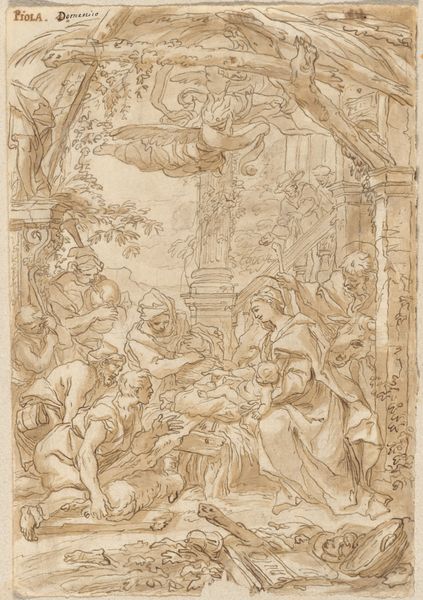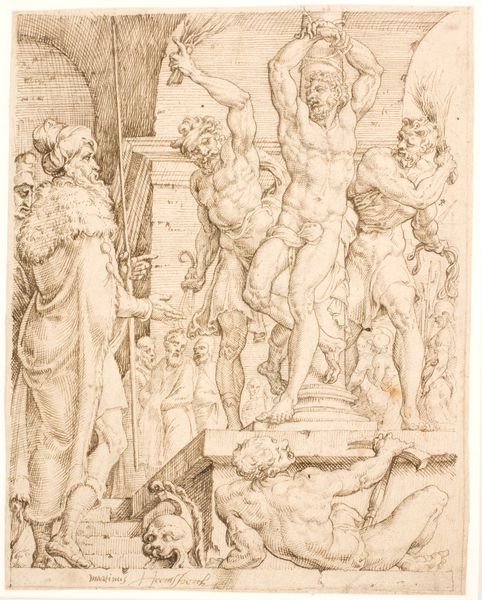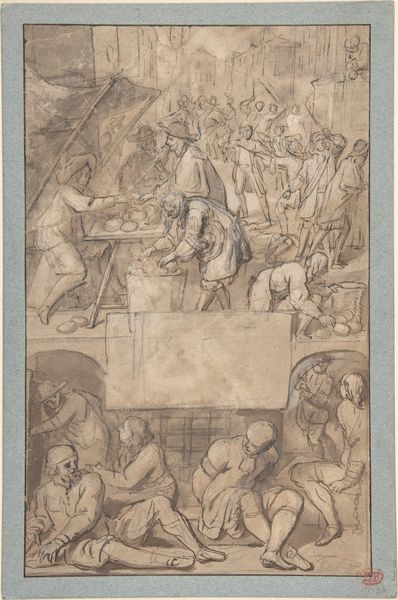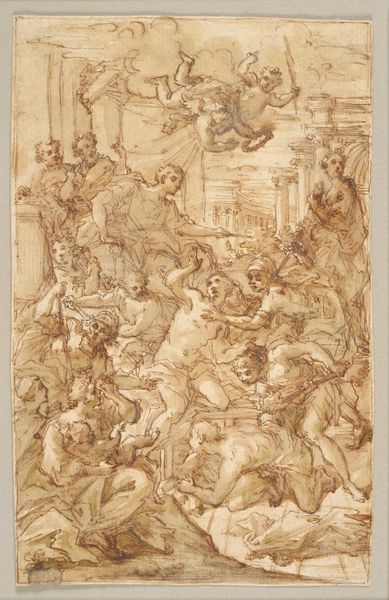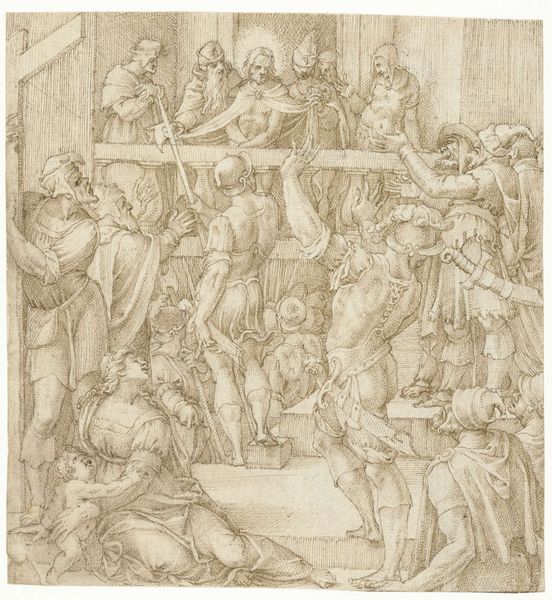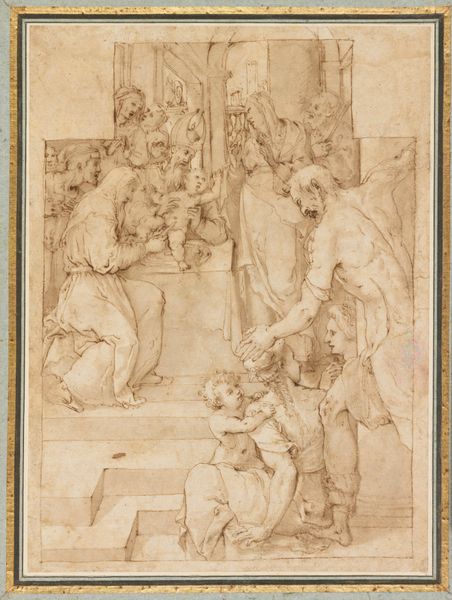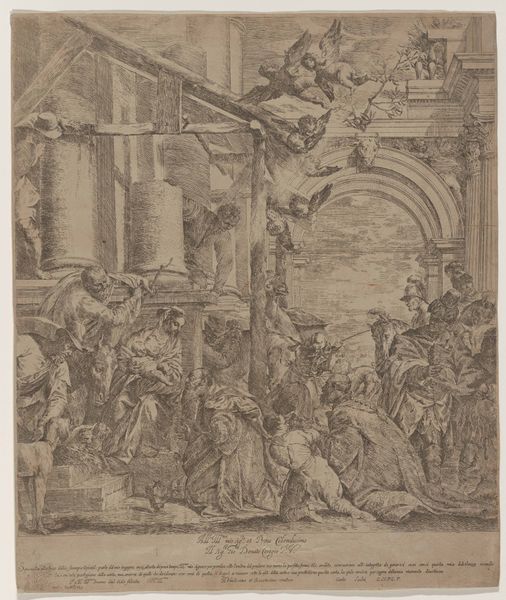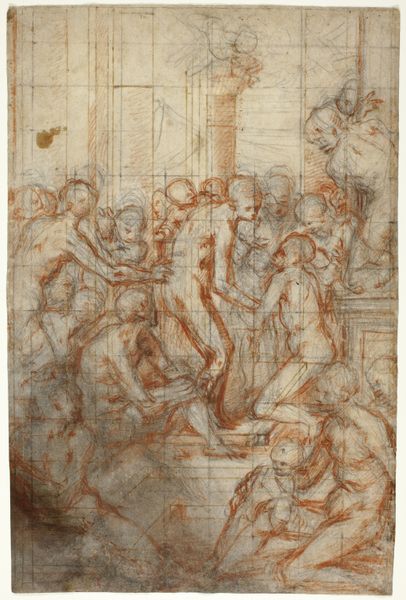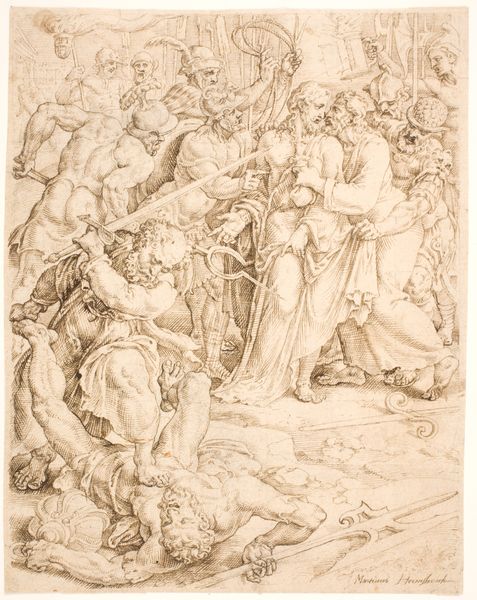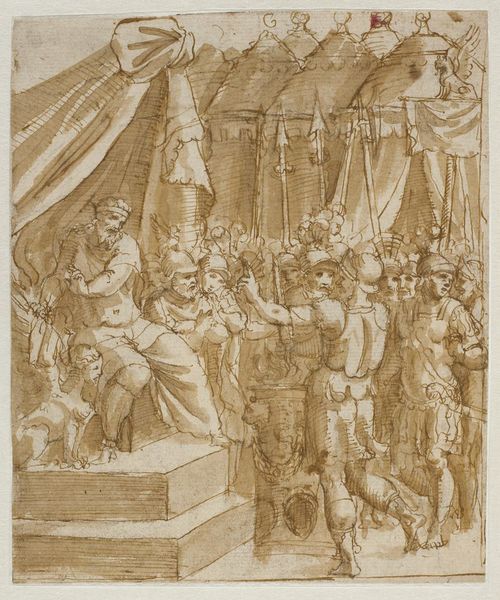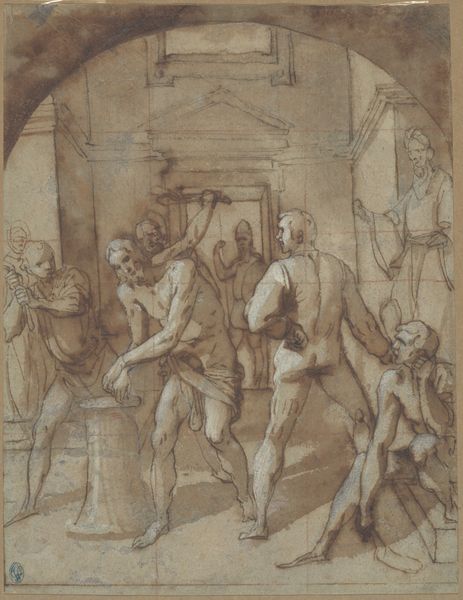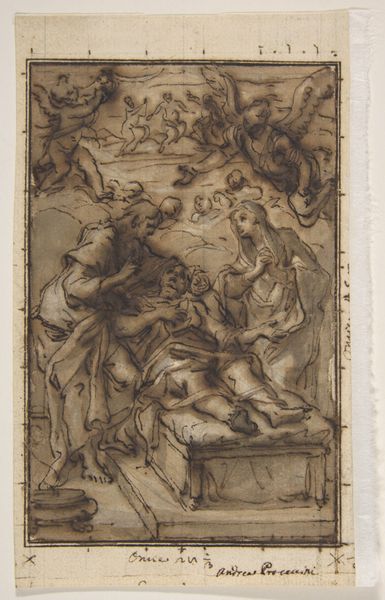
drawing, print, paper, ink
#
drawing
# print
#
figuration
#
paper
#
11_renaissance
#
ink
#
history-painting
#
christ
Dimensions: sheet: 16 5/16 x 8 1/4 in. (41.5 x 21 cm)
Copyright: Public Domain
Curator: Oh, wow. It hits you right away, doesn’t it? Chaotic, feverish...almost claustrophobic with the crowd pressing in. Editor: It certainly does. This is Maarten van Heemskerck’s "Ecce Homo", made sometime between 1510 and 1574. A drawing in ink on paper, now held in the collection of the Metropolitan Museum of Art. Curator: The composition, divided in two levels and crowded with figures, amplifies the drama. You feel Christ's vulnerability presented by Pilate. Is that Pilate? The one in the lavish armor seeming to wash his hands off all the responsibility of judging? The moment captures humanity at its worst, doesn’t it? Editor: Absolutely. Heemskerck uses the "Ecce Homo" – Behold the Man – narrative to explore themes of justice, power, and mob mentality. Look at how the artist contrasts the individual figure of Christ with the mass of faces below. He masterfully captures how easily a crowd can be manipulated. And remember that printmaking, at this time, becomes increasingly intertwined with sociopolitical debates, reformations. The print becomes a perfect medium to allow wide access to these stories, becoming incredibly influential. Curator: It’s amazing how the simplicity of ink on paper can convey so much turmoil. The etching lines feel raw. I almost get the impression that he allowed mistakes on the print, which adds to the immediacy, the feeling that it was produced in the heat of passion or perhaps to express criticism toward social events? It's not trying to be polished, perfect or overly beautiful... which is actually perfect for the subject. Editor: Indeed. This piece wasn't about refined beauty; it was a social mirror. Prints, and artworks alike become carriers of cultural values but also tools of power at times. This reflects society’s values or lack thereof as the figures' facial expressions really bring to life that chaotic tension we discussed earlier. Curator: I get goosebumps just imagining the artist creating it, almost like bearing witness himself. It makes one contemplate about the narratives we choose to amplify through art and media. Editor: Indeed. And it's a sharp reminder of the public role images can hold and carry for centuries to come.
Comments
No comments
Be the first to comment and join the conversation on the ultimate creative platform.
